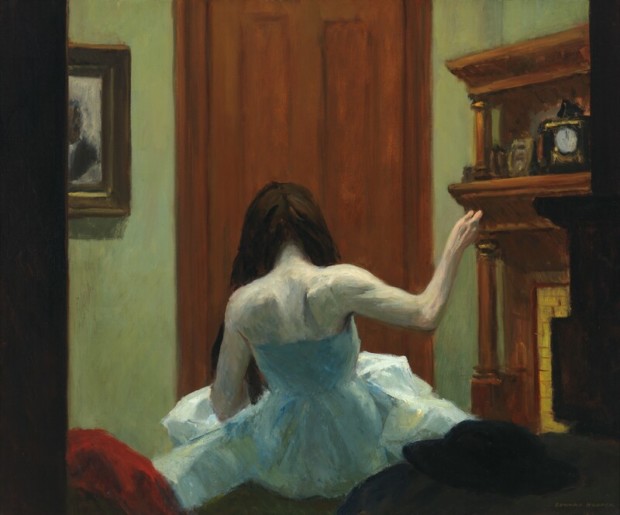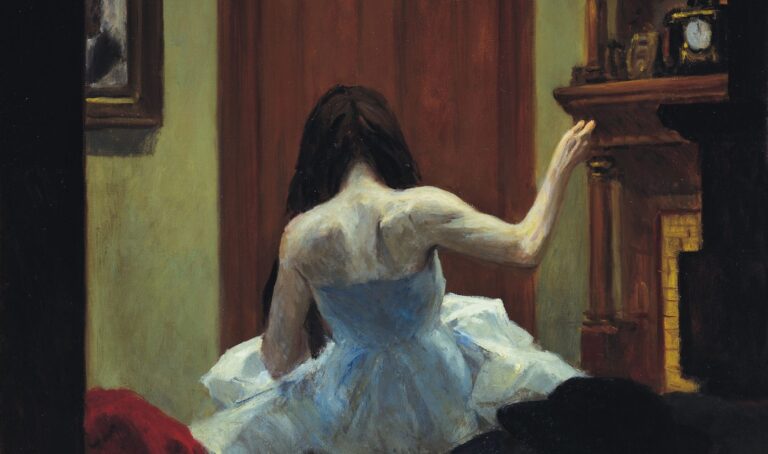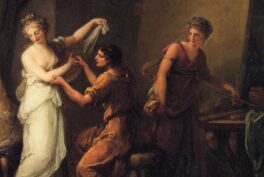Edward Hopper arrived for the first time to New York around the turn of the 20th century. He then studied with Robert Henri and embraced the Ashcan School’s entanglement with its moment. “Art cannot be separated from life,” Henri proclaimed. “We value art not because of the skilled product but because of its revelation of a life’s experience.”
In the appealingly voyeuristic “New York Interior” of 1921, a girl framed in an apartment window – glimpsed, perhaps from a passing elevated train – sits on her bed with her back to the viewer, sewing a length of cloudy fabric spread out in her lap. She is only partly dressed. She may be listening to music or talking to someone through an open door. In a second, she may jump up to answer the telephone. She can do thousand things. But the way Hopper painted her, she becomes a study in isolation – like most of his paintings.

This unconventional view suggests the impersonal—and yet strangely intimate—quality of modern urban life, as glimpsed voyeuristically through a window. The woman’s clothing and gesture are reminiscent of the iconic ballet dancers painted by French Impressionist Edgar Degas, whom Hopper singled out as the artist whose work he most admired.
You might also like to read the article about Edward Hopper “Tables for Ladies”.
Find out more:
[easyazon_image align=”none” height=”500″ identifier=”379134613X” locale=”US” src=”https://www.dailyartmagazine.com/wp-content/uploads/2018/01/517V6FUhdOL.jpg” tag=”dailyartdaily-20″ width=”342″]
[easyazon_image align=”none” height=”500″ identifier=”0393315770″ locale=”US” src=”https://www.dailyartmagazine.com/wp-content/uploads/2018/01/516pOHsqlUL.jpg” tag=”dailyartdaily-20″ width=”393″]






